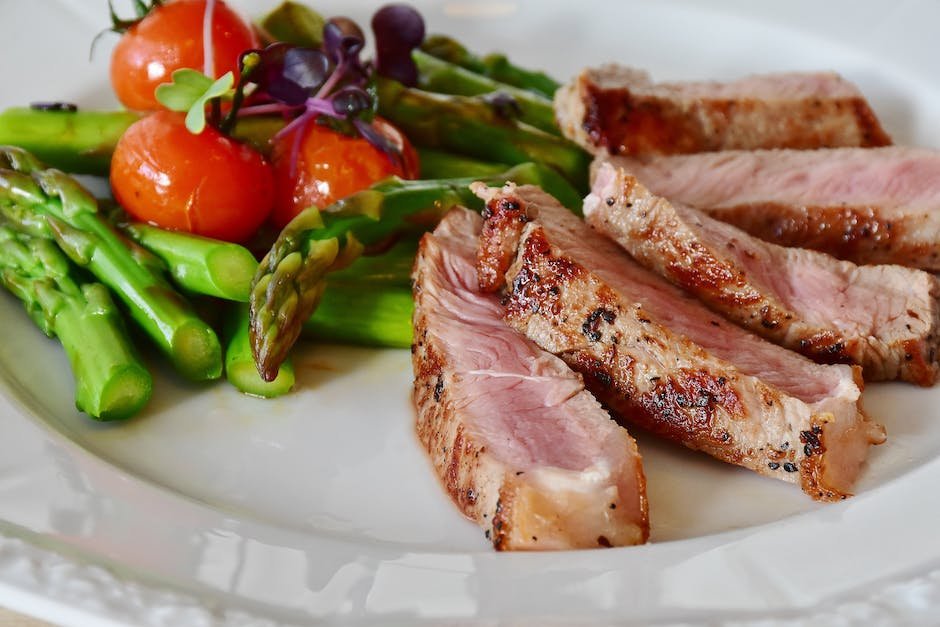While most people can enjoy beef tongue as an appetizer, it is not necessarily the best way to prepare it. When eating beef tongue as a main dish, there are some things you must know how to do!
Beef tongue can be quite tough depending on the market where it comes from. If the tongue does not taste good, then what’s the use of it? Luckily, there are several ways to cook or roast this cut of meat so that it tastes better and more importantly, it will satisfy your hunger more efficiently.
There are two major components in cooking beef tongue: The first is ensuring that it is cooked all the way through and the other is making sure that it flavors well while doing so. In this article, we will discuss one of our favorite recipes for beef tongue – Roasted Stuffed Beef Tongues with Gravy.
Pat dry with a clean towel
After you wash your beef tongue, it is very important to pat it dry. If you don’t, then it will stick to the towels and never get properly dried.
The muscles in beef tongues can become coated in raw meat or blood when they are consumed. This may cause food poisoning if those exposed to the mouth eat anything within two hours of exposure.
Be sure to use a lint-free cloth to wipe away excess water and prevent fat from staying on the towel. You can also run the cloth under some running water to make sure there are no leftover pieces of tongue on it.
Once it is completely dry, wrap the beef tongue in either parchment paper or plastic wrap and refrigerate until ready to cook it.
General tips for cooking meats
Never leave cooked foods at room temperature longer than an hour as this allows bacteria to grow and ferment the meat.
Put the tongue into a bowl of cold, runny, water

Now that you have removed any visible dirt or fat, it is time to clean your beef tongue!
When cleaning beef tongues, make sure to only wash them in fresh, cold water. Do not use dried up leftover cooking waters as this will result in meat that does not taste good and can be harmful for you if you eat it.
Beef tongs are one of the best tools to use when washing the beef tongue. You can either use your hands or plastic bowls to do so.
Let the tongue soak in the water for 10 minutes

After washing the grill, let your butcher cut the tongue into thin slices or shred it so that you can put it in separate containers as needed.
When choosing where to store your leftover beef tongue, remember that not only should it be refrigerated, but also what kind of packaging you use makes a difference.
Thin sliced meat will keep well if wrapped in plastic wrap and stored in the refrigerator for up to one week. If left whole, roll it in paper towels and then place in an airtight container or bag with layers of parchment paper to prevent moisture from seeping out.
Lift the tongue out of the water and gently pull it apart
The next step is to lift the tongue up, separate it into two pieces, and then wash each half independently. Start by lifting one side of the tongue out of the pan.
Once you have done that, use your hand or a spoon to push away any fat deposits. Next, rinse both halves under running water so they can absorb some of the leftover cooking liquid.
When they are dry, put the longer piece back together and scrape off any remaining meat or gelatin from the other half. Repeat with the second piece.
Now, if there is still too much fat on it, go in order of most important to least important: cook them all again in a different recipe or process; butter or olive oil; rice; bread.
Use a toothbrush to gently brush the tongue

After you rinse off the grill, your next step is cleaning the other internal parts of the beef cheek. These include lifting out any burnt bits or meat that may have stuck onto the grill.
Next, use a clean, wet paper towel to wipe away any fat that has accumulated in the mouth. This will also help remove strong flavorings such as burned sugar.
Once this is done, wash your hand with warm water to prevent sticking or burning from the leftover grease. Then, dry the tongs thoroughly! If there are still some small pieces of food left, cut them into smaller pieces and put back into the freezer until they can be thrown out.
This way, they won’t stick to the metal trash cans! (We recommend always washing your hands after eating so that you don’t spread germs to others.) Refrigerate the rest for later.
Use your fingers to feel for any stray pieces
After you rinse off the meat, it is important to check it for anything leftovers or stuck onto it. You can use your hands to do this as well as a good knife!
The hardest part of cleaning beef tongue is actually getting rid of all the excess fat. There are many ways to accomplish this, but the best way depends on how much fat you have and what kind of taste you want to give up.
The most common method is using a paper towel to wipe away some of the fat. Make sure to scrape the leftover bits of fat off so that they don’t re-enter the muscle and be stored there.
Another option is to put the cooked beef tongue in an oven or broiler and heat it until the fat melts down. Then, pour the melted fat into a bowl while still hot. Once cooled, skim off the top layer with a spoon or spatula and discard it.
Rinse the tongue under cold water again
The second step is rinsing the beef tongue under cold, lukewarm water. This was probably one of the messiest steps as there are many things you will come across while cleaning this muscle.
The soft tissue in the mouth can get stuck in your grill or meat grinder when all cooked down. These pieces of flesh that become embedded in the grill or machine can stick and scrape away the protective layer which helps prevent bacterial growth.
This can lead to inflammation or infection if not removed properly. If you find any bits of debris in the mouth, take extra care to remove it so it does not re-enter the body.
Pat dry with a clean towel
After you rinse your beef tongue, it is important to make sure that it is completely dried off. If you do not, some of the fat will remain in the tissue which does not help digestion of the meat.
When washing the beef tongue, we are careful not to wash away too much of the fat since this would contribute to unhealthy eating habits. Some people also believe that taste comes from the fats found in food so if you were to remove most of the fat, then your taste buds may no longer be able to detect flavorings such as salt or pepper.
After the tongue has been dried thoroughly, either use the back of a knife to scrape off any leftover bits of fat or take advantage of the other parts of the body that have flesh that can be used for cooking! For example, think about the shoulder or flank steak that you could cut up into strips and cook like bacon. Technically, those pieces of meat are called flor steaks but they go by many different names depending on what part of the animal they come from.
Beef tongues are no exception to this rule and can be cooked just like lamb ribs or chicken breasts. They are similar in shape and size so they work well when sliced across the middle. More information here: https://www.foodnetwork.


















